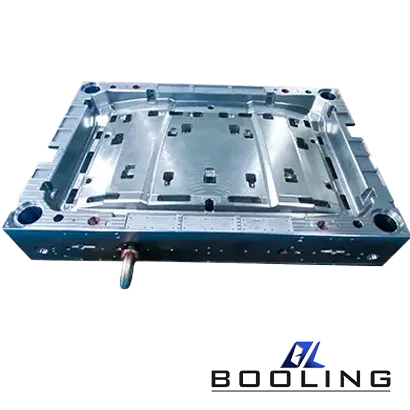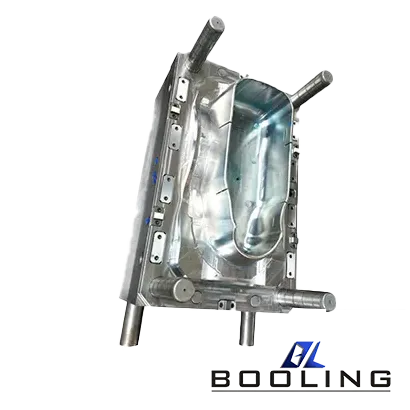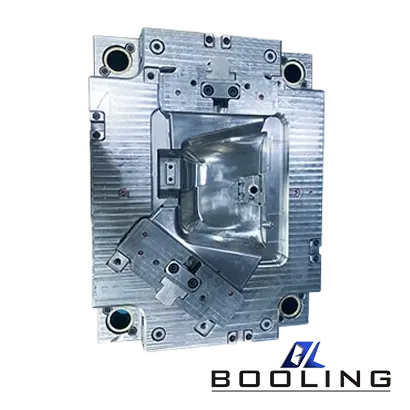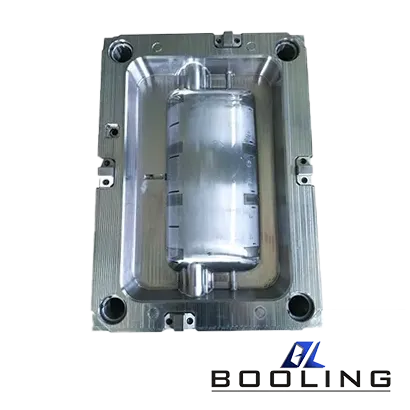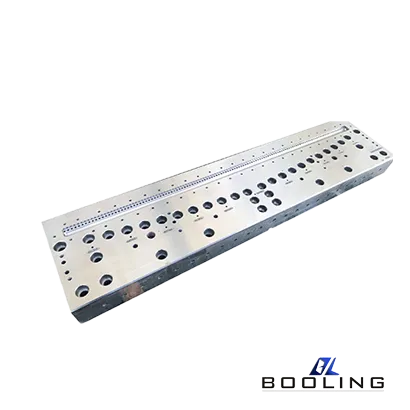Home > Injection Molding
Injection Molding Company
Injection Molding
Booling has a complete one-step customized injection molding solution, enabling every industry to achieve the best production efficiency with the lowest cost. We have delivered hundreds of sets of molds to over 30 countries worldwide.
Thermoplastic polyurethane (TPU) materials have outstanding advantages in injection molding, such as good aging resistance, wear resistance, and strength, which can be widely used in automobiles, clothing, furniture, or medical fields.
EVA injection molding technology has been widely used by manufacturers in various industries, including but not limited to medical, automotive, electronic, and household products, due to its high precision and smoothness.
The main principle of TPE injection molding is to inject melted thermoplastic elastomer material into the mold cavity under high pressure, cool it, and form a plastic part that is consistent with the shape of the mold cavity.
Thermoplastic injection molding is a complex manufacturing technology that primarily involves injecting molten liquid thermoplastic materials into the mold cavity under immense pressure.
The main process of organic silicon injection molding is to inject liquid silicone rubber (LSR) melted under compressed air into the heated mold cavity, cool it, and solidify it to form a plastic part.
The rubber material used in the rubber injection molding process has good elasticity, aging resistance advantages, which can combine the injection molding principle with the unique properties of rubber materials.
The main principle of PVC injection molding technology is to inject molten PVC material into the mold cavity, cool it, and solidify it to form products with excellent physical properties and chemical stability.
The materials used in polyurethane (PU) injection molding have excellent heat resistance, stability, low water absorption, and pollution, and have been highly valued by manufacturers in various industries.
Polycarbonate injection molding is a special plastic manufacturing process that is widely used in fields such as automotive parts, medical, and industrial due to its versatility and advantages in producing high-quality components.
A mold is a tool used in the manufacturing of plastic injection molding technology products, usually made of hardened steel or aluminum alloy, which has high requirements for accuracy and corrosion resistance.
The characteristics of silicone rubber (LSR) raw materials are combined with injection molding technology, and the products produced are widely exported to countries such as the United States, Vietnam, and India.
The components produced by liquid silicone resin (LSR) injection molding have excellent performance and can be used to manufacture insulated electrical appliances, medical equipment, and automotive components.
Manufacturers widely apply HDPE injection molding technology to the plastic molding industry, such as healthcare, industry, electronics, and construction, and export it to many countries such as Germany and Spain.
ABS injection molding technology, with its advantages of high efficiency, flexibility, and versatility, has been applied by many mold suppliers in fields such as automobiles, aerospace, and industry.
The prototype plastic injection molding method requires creating a mold cavity and injecting molten plastic into it under high pressure, ultimately cooling and hardening into the desired shape.
Guidelines for Injection Molding
Injection molding is a manufacturing process used to produce plastic parts by injecting molten material into a mold cavity.
Injection Molding Guide
Injection molding is a cutting-edge manufacturing process that involves injecting molten material, typically thermoplastics or thermosetting polymers, into a carefully crafted mold cavity. This cavity, created using advanced CAD/CAM software and precision machining techniques, serves as a blueprint for the final product. Injection molding ensures accuracy, repeatability, and versatility in shaping complex designs with intricate details and tight tolerances.

Advantages of Injection Mold
- Unmatched Precision: Injection molding excels in producing highly intricate and complex geometries, including undercuts, threads, and thin walls, with exceptional accuracy. This level of precision is critical in industries such as medical, automotive, and electronics.
- Cost-Effective: Injection mold technology enables high-volume production, resulting in economies of scale and lower per-unit costs. Additionally, the repeatability of the process minimizes scrap and waste, optimizing material usage and reducing overall production expenses.
- Faster Time to Market: Injection molding allows for rapid production cycles, ensuring speedy delivery of products to the market. This advantage is particularly beneficial in industries with short product lifecycles, such as consumer electronics and fashion.
- Material Versatility: From commodity-grade plastics to engineering-grade polymers, injection molding supports a wide range of materials. This versatility empowers designers and engineers to choose the most suitable material properties, balancing performance, durability, and cost.
How Injection Molds Work:
Injection molds consist of two main parts – the mold cavity and the mold core. The mold cavity defines the external shape of the product being manufactured, while the mold core determines its internal features. The molten plastic material is injected into the mold cavity under high pressure, where it solidifies, conforming to the shape of the mold. Once the plastic has cooled and solidified, the mold is opened, and the finished product is ejected.
Applications and Benefits of Injection Molds
- Diverse Applications:
Injection molds find wide-ranging applications across various industries, including automotive, electronics, medical devices, consumer goods, and more. From intricate parts in electronic devices to robust components in automobiles, injection molds cater to a diverse range of manufacturing needs.
- Precision and Accuracy:
One of the key advantages of injection molds is the ability to produce highly detailed and intricate designs with exceptional precision. The molds can replicate intricate patterns, textures, and fine details consistently, resulting in high-quality finished products.
- Efficiency and Cost-Effectiveness:
Injection molding, facilitated by injection molds, enables high-volume production with remarkable speed and efficiency. The molds allow for continuous and rapid production cycles, significantly reducing manufacturing time and costs. The process also minimizes wastage of raw materials, making it an environmentally friendly option.
Advancements in Injection Molds Technology
- Innovative Material Selection:
The advent of new materials, such as advanced thermoplastics and composites, has revolutionized the capabilities of injection molds. These materials offer enhanced mechanical properties, improved heat resistance, and superior durability, expanding the scope of applications for injection molded products.
- Computer-Aided Design and Simulation:
Modern injection molds incorporate computer-aided design (CAD) and simulation technologies, enabling precise prototyping and comprehensive analysis before the actual production phase. Through virtual simulations, manufacturers can optimize the mold design, identify potential issues, and improve the overall manufacturing process.
- Industry 4.0 Integration:
The integration of injection molds with Industry 4.0 technologies, such as the Internet of Things (IoT) and artificial intelligence (AI), has further enhanced their capabilities. Injection molds equipped with sensors and real-time monitoring systems enable predictive maintenance, improved quality control, and higher productivity.
How to Maintain Injection Mold?
Proper maintenance and care are essential for prolonging the lifespan and performance of injection molds. Injection mold manufacturers can ensure efficient and high-quality production while reducing the risk of defects and costly repairs.
- Inspection and Cleaning:
Regular inspection and cleaning of injection molds are crucial to prevent defects and ensure optimal performance. This section will cover the following points:
– Visual inspection: Diligently examine the mold for any signs of damage, corrosion, or wear. Look for cracks, scratches, or uneven surfaces that may affect the quality of the final product.
– Cleaning techniques: Discuss effective cleaning methods, such as using non-abrasive brushes, compressed air, or specialized cleaning solutions. Emphasize the importance of removing dust, debris, or residual plastic material that may accumulate and affect mold performance.
- Lubrication and Rust Prevention
Proper lubrication is vital for the smooth operation of injection molds, preventing friction and reducing wear. Additionally, rust can severely damage molds, affecting the final product’s quality. Highlight the following topics:
– Lubrication techniques: Outline the appropriate lubricants to use and stress the necessity of applying them to all moving parts regularly. Mention specific areas that require lubrication, such as the sprue bushing, ejector pins, and slide mechanisms.
– Rust prevention: Explain the potential causes of rust, such as moisture and exposure to corrosive elements. Discuss measures like using rust preventative coatings, regular inspections, and proper storage conditions to ensure mold longevity.
- Temperature Control and Cooling:
Proper temperature control and efficient cooling play key roles in the injection molding process. Explain the significance of temperature control and cooling techniques in maintaining mold performance and improving product quality. Cover the following points:
– Optimal operating temperature: Discuss the importance of maintaining the recommended temperature range to prevent thermal stress and material distortion.
– Cooling systems: Explain different cooling techniques, such as water channels or temperature controllers, and their role in ensuring consistent mold performance.
- Maintenance Schedule and Recordkeeping:
Establishing a maintenance schedule and maintaining detailed records is crucial for mold maintenance. Emphasize the significance of recording activities, maintenance procedures, and observations to improve mold performance, track improvements, and identify potential issues. Discuss the following aspects:
– Establishing a maintenance schedule: Provide guidelines for creating a maintenance plan that outlines routine inspections, cleaning, lubrication, and preventive maintenance tasks.
– Recordkeeping: Stress the importance of documenting maintenance activities, including dates, findings, and any corrective actions taken. Mention the value of maintaining a historical record to track mold performance trends and identify patterns.
Various Types and Styles of Injection Mold
Injection molds, also known as injection molding tools, are crucial components in the manufacturing industry. They are designed to shape molten material, such as plastic or metal, into specific forms. Injection molds come in various types and styles, each with its own unique characteristics and applications.
- Single Cavity Mold: As the name suggests, this type of mold creates a single product at a time. It is ideal for producing small quantities or prototypes. Single cavity molds are relatively simple in design, making them cost-effective for low-volume production runs.
- Multi-Cavity Mold: Unlike the single cavity mold, the multi-cavity mold has multiple cavities that enable the production of multiple products simultaneously. This type of mold significantly increases production efficiency and is commonly used for high-volume manufacturing. It is widely applied in industries such as consumer electronics, automotive, and medical devices.
- Family Mold: A family mold consists of two or more different parts that are connected together. It allows for the simultaneous production of multiple components in a single injection cycle. Family molds are frequently used when different parts of a product need to be assembled together, saving both time and production costs.
- Hot Runner Mold: In a hot runner mold, the channels that carry the molten material remain hot throughout the production process. This prevents the material from solidifying, reducing waste and improving product quality. Hot runner molds are highly efficient and suitable for large-scale production.
- Prototype Mold: The prototype mold is used for creating prototypes or product samples for testing and validation purposes. These molds are often produced quickly using cost-effective materials, allowing for timely adjustments and modifications before mass production.
In addition to the various types, injection molds come in different styles based on their design and construction. Some common styles include two-plate molds, three-plate molds, and stack molds. Each style offers specific advantages depending on factors such as product complexity, production volume, and cost considerations.
It is important to note that the selection of an appropriate injection mold type and style depends on various factors, including the specific requirements of the product, production volume, budget constraints, and manufacturing timeline.
Injection molds comprise a wide range of types and styles, each catering to different manufacturing needs. Familiarizing oneself with these options is crucial for making informed decisions and optimizing production processes.


